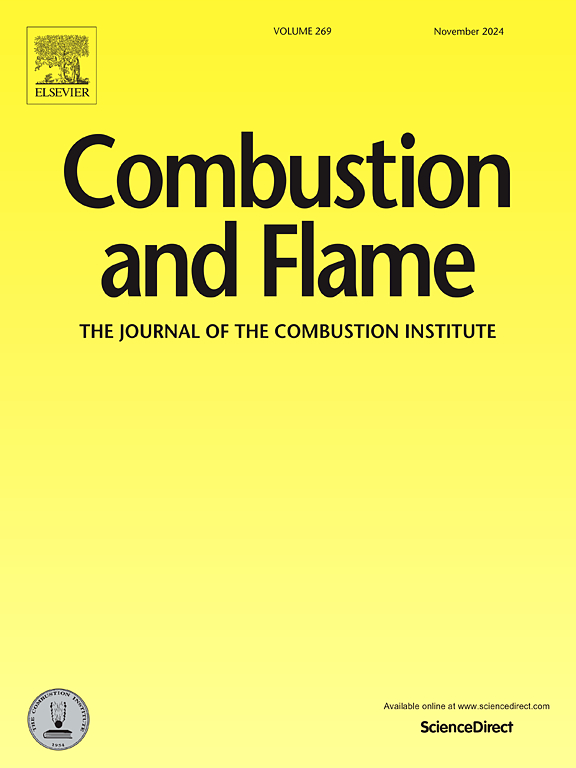Ab initio kinetics for H-atom abstraction from nitroethane
IF 5.8
2区 工程技术
Q2 ENERGY & FUELS
引用次数: 0
Abstract
Nitroethane (NTH) is nitro-containing energetic fuel for detonation engine. The study of the kinetic mechanism of nitroethane combustion is helpful for the development of models of nitrogen-containing energetic materials and provides theoretical support for CFD simulation of detonation engines. H-atom abstraction reactions play a crucial role as chain initiation processes in the detailed chemical kinetic modeling of NTH combustion. Therefore, high-level quantum chemical calculations were performed to determine the rate coefficients for eighteen abstraction reactions, as well as the thermodynamic properties of the species involved. M06–2X/6–311++G(d, p) level of theory was employed for geometry optimization, vibrational frequency calculation, Intrinsic Reaction Coordinate (IRC) analysis, and dihedral angle scans. The QCISD(T)/cc-pVXZ (X=D and T) MP2/cc-pVXZ (X=D, T and Q) and CCSD(T)/cc-pVXZ (X=T and Q) methods with two complete basis set extrapolations are employed for determining the single-point energy (SPE) for all species. The bond dissociation energies (BDEs) of all C-H, C–C, and C-N bonds in NTH were calculated at QCISD(T)//MP2//M06–2X/6–311++G(d, p) level. Rate constants and thermochemistry were carried out based on transition state theory (TST) and statistic thermodynamic theory using Multiwell software. The Master Equation System Solver (MESS) program suite was employed here to calculate the reaction rate constants for complex-forming reactions for ȮH and O2 system. The reaction energy barriers and reaction rate constants calculated using two methods—QCISD(T)/cc-pVXZ (with X as D and T) and MP2/cc-pVXZ (with X as D, T, and Q), as well as CCSD(T)/cc-pVXZ (with X as T and Q)—show little difference. All results were then incorporated into the PLUG model, which significantly improved predictions for ignition delay time (IDT) as well as the speciation profile in both premixed flames and flow reactors. Sensitivity and flux analyses were conducted to identify the essential reactions controlling reactivity, revealing that H-atom abstraction by ȮH, Ḣ, CḢ3, and O2 are the critical reactions.
求助全文
约1分钟内获得全文
求助全文
来源期刊

Combustion and Flame
工程技术-工程:化工
CiteScore
9.50
自引率
20.50%
发文量
631
审稿时长
3.8 months
期刊介绍:
The mission of the journal is to publish high quality work from experimental, theoretical, and computational investigations on the fundamentals of combustion phenomena and closely allied matters. While submissions in all pertinent areas are welcomed, past and recent focus of the journal has been on:
Development and validation of reaction kinetics, reduction of reaction mechanisms and modeling of combustion systems, including:
Conventional, alternative and surrogate fuels;
Pollutants;
Particulate and aerosol formation and abatement;
Heterogeneous processes.
Experimental, theoretical, and computational studies of laminar and turbulent combustion phenomena, including:
Premixed and non-premixed flames;
Ignition and extinction phenomena;
Flame propagation;
Flame structure;
Instabilities and swirl;
Flame spread;
Multi-phase reactants.
Advances in diagnostic and computational methods in combustion, including:
Measurement and simulation of scalar and vector properties;
Novel techniques;
State-of-the art applications.
Fundamental investigations of combustion technologies and systems, including:
Internal combustion engines;
Gas turbines;
Small- and large-scale stationary combustion and power generation;
Catalytic combustion;
Combustion synthesis;
Combustion under extreme conditions;
New concepts.
 求助内容:
求助内容: 应助结果提醒方式:
应助结果提醒方式:


